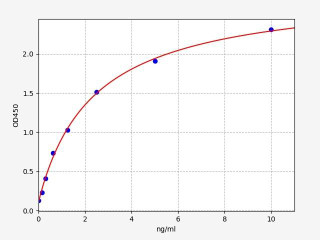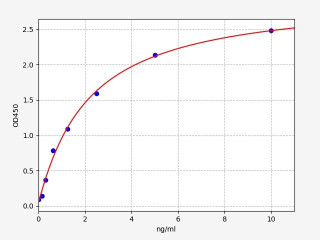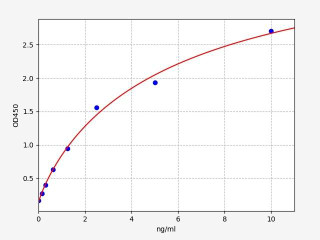Oct-4 Stem Cells
Oct-4 stem cells, also known as Octamer-binding transcription factor 4 stem cells, are a fascinating area of study in the field of stem cell research. These stem cells hold great promise due to their unique characteristics and potential applications in regenerative medicine and developmental biology. This article provides information on Oct-4 stem cells, their properties, roles, and therapeutic implications.
What are Oct-4 Stem Cells?
Octamer-binding transcription factor 4 stem cells (Oct-4) stem cells are a subtype of pluripotent stem cells that express the Oct-4 transcription factor. Belonging to the POU family of homeodomain transcription factors, Oct-4 stem cells are POU5F1-dependent pluripotent stem cells that can be derived from embryonic or adult cells.
Oct-4 pluripotent stem cells were first isolated from the inner cell mass of mouse embryos. The POU5F1 gene is essential for the development of these cells, and it is also required for the maintenance of pluripotency. Oct-4 stem cells can give rise to any cell type in the body, and they are therefore a valuable tool for studying cell development and disease. They have been used to generate many different cell types in the laboratory, including neurons, heart cells, liver cells and pancreatic cells.
Oct-4 Stem Cell Expression
Oct-4 expression is particularly prominent in embryonic stem cells (ESCs) and induced pluripotent stem cells (iPSCs). The presence of Oct-4 in these cells serves as a key marker, signifying their undifferentiated state and their capacity to give rise to all three germ layers of the developing embryo.
Here's an overview of the general process:
-
Establishment of Oct4-positive ES cell culture: Initially, Oct4-positive ES cells are derived and cultured under specific conditions that maintain their pluripotent state. These ES cells express high levels of Oct4, a key transcription factor associated with pluripotency.
-
Induction of lineage commitment: To initiate differentiation, the culture conditions are modified to promote the differentiation of Oct4-positive ES cells into specific lineages. This is typically achieved by altering the growth factors, media composition, and substrate properties.
-
Formation of embryoid bodies (EBs): The Oct4-positive ES cells are often aggregated to form three-dimensional structures called embryoid bodies (EBs). These EBs mimic early developmental processes and allow for the generation of various cell types.
-
Specification of lineage-specific progenitor cells: Within the EBs, the Oct4-positive ES cells undergo a process of lineage commitment, where they give rise to progenitor cells that have the potential to differentiate into specific cell lineages. The specific factors and cues provided in the culture media help drive this process.
-
Terminal differentiation: The lineage-specific progenitor cells further mature and differentiate into specialized cell types, losing Oct4 expression along the way. The cells acquire the molecular and functional characteristics of the target cell type they are programmed to become.
Oct4 Expression and ESCs
What is the Role of Oct-4 Stem Cells?
1. Oct-4 Stem Cells and Maintaining Pluripotency
Oct4 plays a crucial role in maintaining the pluripotent state of embryonic stem cells, allowing them to differentiate into various cell types. One of the mechanisms through which Oct4 accomplishes this is by inactivating p53, a tumor suppressor protein, through the process of Sirt1-mediated deacetylation. By deacetylating p53, Oct4 prevents it from activating genes involved in cell cycle arrest and apoptosis, thereby promoting the self-renewal and undifferentiated state of the stem cells.
2. Oct-4 Stem Cells and Early Embryo Development
OCT-4, plays a pivotal role in early embryo development by regulating the expression of genes involved in pluripotency and embryonic differentiation. It maintains the delicate balance between self-renewal and lineage commitment, ensuring the proper development of the embryo. OCT-4 finely coordinates the activation or suppression of specific genes, contributing to the establishment and maintenance of pluripotent cells during embryogenesis. Its precise control over gene expression patterns is essential for the formation and organization of different cell lineages, shaping the foundation of embryonic development.
3.Oct-4 Stem Cells and Reprogramming
Oct4, along with other factors, has the ability to reprogram somatic cells, converting them into induced pluripotent stem cells (iPSCs), which possess similar properties to embryonic stem cells. Oct4, when introduced into somatic cells, plays a pivotal role in resetting the cellular state, erasing the cell's specialized characteristics, and restoring pluripotency. This reprogramming process allows the somatic cells to regain the ability to differentiate into various cell types, resembling the properties and potential of embryonic stem cells.
Challenges and Future Perspectives of Oct-4 Research
The pluripotent nature of Oct-4 stem cells holds therapeutic potential, however, there are still challenges that need to be addressed. One of the key challenges is the precise regulation of Oct-4 expression and function. Maintaining the delicate balance between pluripotency and differentiation requires a thorough understanding of the intricate regulatory networks involved. Additionally, improving the efficiency and safety of reprogramming somatic cells into pluripotent cells using Oct-4 is an ongoing area of research. Further research is also needed to uncover the potential risks associated with Oct-4 reprogramming, such as tumorigenicity. Despite these challenges, the future of Oct-4 research is promising.
Written by Lauryn McLoughlin
Lauryn McLoughlin completed her undergraduate degree in Neuroscience before completing her masters in Biotechnology at University College Dublin.
Assay Genie Blogs
Recent Posts
-
Enavatuzumab: Revolutionizing Cancer Research Through Novel Therapeutics
Quick Facts About EnavatuzumabWhat is Enavatuzumab?Enavatuzumab is a monoclonal antibo …17th Dec 2025 -
Alemtuzumab: Mechanism, Applications, and Biosimilar Advancements
Quick Facts About AlemtuzumabWhat is Alemtuzumab?Alemtuzumab is a monoclonal antibody …17th Dec 2025 -
Praluzatamab: Unveiling the Promise of CD47-Targeted Therapy in Cancer Research
Quick Facts About PraluzatamabWhat is Praluzatamab?Praluzatamab is an experimental mon …13th May 2025







